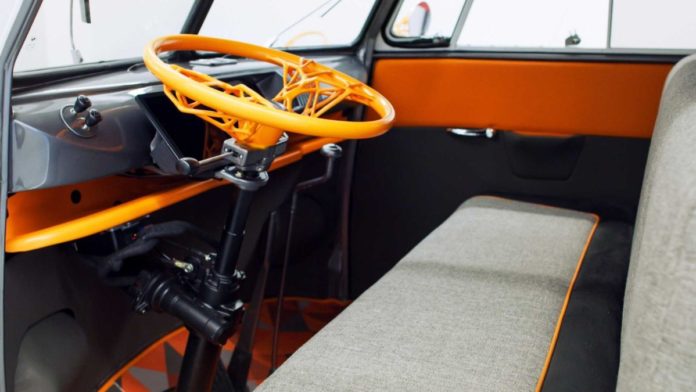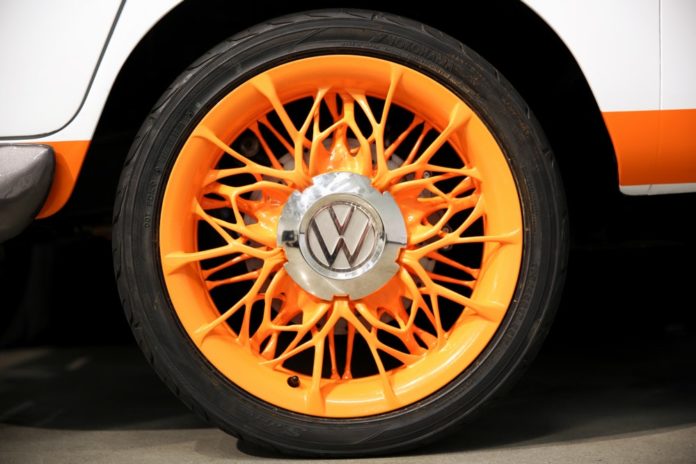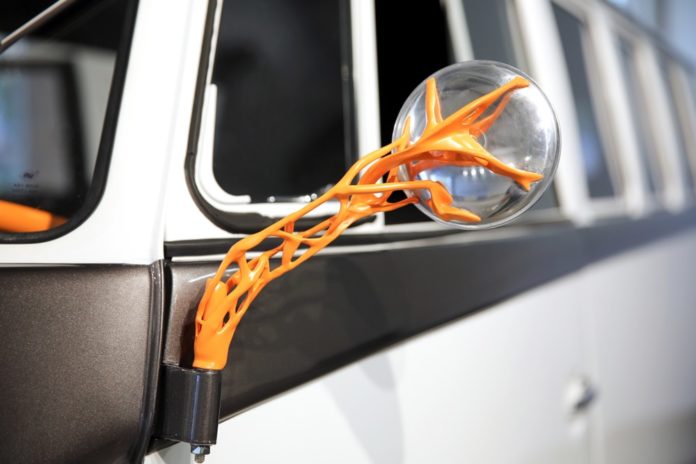Despite the high technology at its core, the Volkswagen Type 20 Concept was designed using a true retro classic as its foundation. VW took a 1962 11-window, Type 2 Microbus, the kind of vehicle which was extremely popular at the original Woodstock and electrified it. The final result packs a 10 kilowatt-hour battery, a 2,500-watt onboard charger, and an electric motor rated at 120 hp and 173 lb-ft of torque.
“The future of the Volkswagen Group will be defined by our success in developing new technology that is designed to meet our customers’ needs,” said Scott Keogh, President and CEO, Volkswagen Group of America. “As we roll out the next generation of electric and autonomous vehicles, innovation will increasingly define who we are.”
What’s Old is New Again

To increase the vehicle’s utility, Volkswagen and Porsche teamed up to create a pneumatic suspension system which allows the microbus to raise and lower itself with ease. To boost its security, the Type 20 features outrageous biometric features including a facial recognition system and 720p wide-angle camera on the driver’s side which is used to verify a driver’s identity.
Volkswagen Type 20 Concept: Orange EV Elegance
The Type 20 also has a lot of exterior design flourishes to ensure no one mistakes it for one of the classic VW busses. Orange features prominently both inside and outside the car. It is used to outline the bus’s mirror arms, to bring personality to the VW logo, and also to add some pop of color to the interior stitching of its seats.

To further illustrate the Type 20’s high tech features, the concept shows of a new digital assistant suite of tools. Comprised of a speech recognition system, facial recognition software, cameras and microphones, this is a car that you are meant to be able to truly communicate with. From outside, simple voice commands will be answered with changes to the car’s headlights and VW logo to show that it has understood you.
On the dashboard, a new holographic infotainment system called Looking Glass II is able to show mind-bending 3D images without the need for any special glasses or other hardware.
VW has said the Type 20 represents 20 years of research at the company’s silicon valley based Electronics Research Lab, now known as the Innovation and Engineering Center California. This center is the brand’s largest dedicated research facility outside of its homebase of Germany.

Volkswagen is enthusiastic it’s continued research in California will continue to result in fruitful creations such as the Type 20.
The former ERL served as the Volkswagen Group’s research and innovation hub in Silicon Valley for more than 20 years. It grew from just three employees when it was founded in 1998, to more than 180 engineers, social scientists, researchers and product designers. Over the past two decades the campus helped develop several key vehicle technologies, such as predictive navigation and online speech, along with impressive technical demonstrations, such as “Stanley,” the first robotic car to complete the DARPA Grand Challenge in 2005 by navigating 132 miles of desert without human intervention.

The IECC will be comprised of two entities: the Innovation Center California (ICC) and the Engineering Center California (ECC). The ICC is one of three global Group Innovation centers that will be tasked with key “lighthouse projects” and focus on bilateral research and pre-development projects for VW Group brands. The ECC will focus on connected car, intelligent cockpit, and autonomous driving and parking development projects in the North American region.

“We are excited to move into our next chapter as the IECC, to continue designing innovations that will bring the Volkswagen Group vehicles into the future with cutting-edge technology,” said Nikolai Reimer, IECC senior vice president. “The Type 20 is a fantastic example of how we celebrate our heritage while striving to advance our technology.“
Source: Inside Devs
